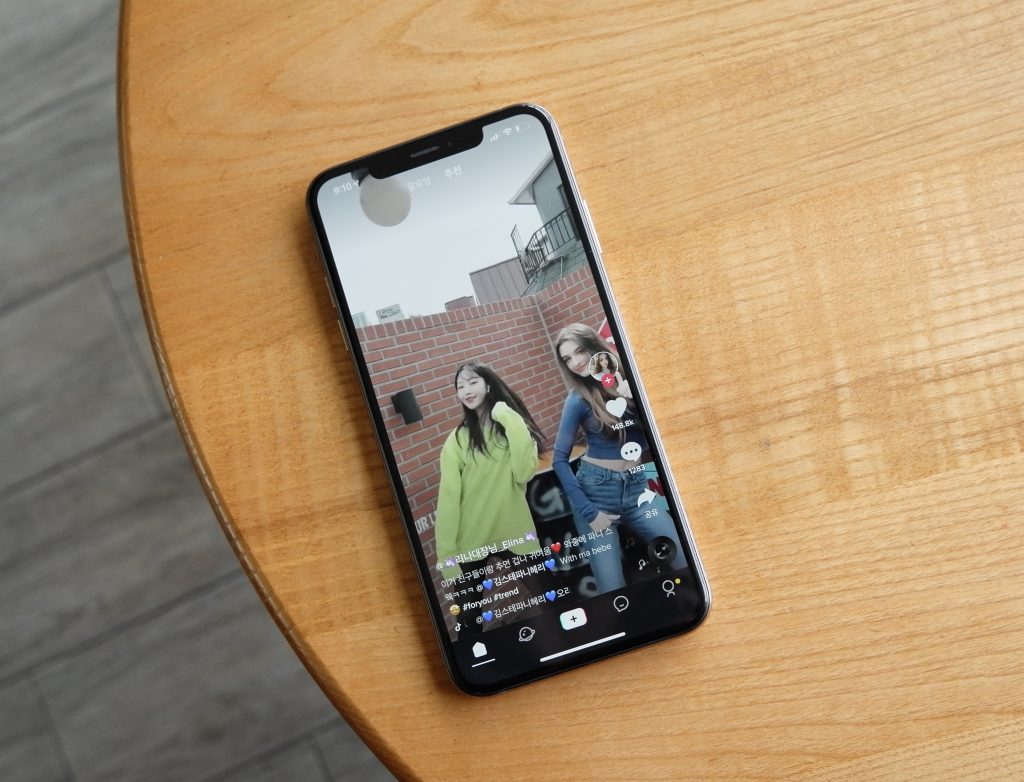
“Tiktok” by TheBetterDay is licensed under CC BY-ND 2.0.
If you’ve used TikTok for a while you must have been through something like this: you are watching young and beautiful men and women talking on the screen, showcasing their life and refined taste. When they began to talk about that new snickers they bought on eBay, you suddenly get a strange urge to buy a pair of snickers just like that. You then switched to eBay and began shopping. If this has ever happened to you, then you’ve known the power of TikTok ads. Yes, you thought that was an entertaining video, but it’s an ad!
What is TikTok Ad?
For those who have never used TikTok, we’d better start with a brief introduction to this burgeoning social media site. TikTok is a mobile-based platform that allows users to upload short videos on any subject. Originating in China, 2016, TikTok has rocketed to prominence in 2019. By the start of 2020, it had become the most popular app in the world, ranking top on the Apple Store and Google Play Store (Gray, 2021). TikTok has secured 1.466 million active users in 2022, and that number is estimated to reach 1.677 million by the end of 2023 (Knight, 2023).
TikTok Ads, as its name suggests, is advertisement on TikTok, as a way of commercialization of the social media. Ever since TikTok was at its development stage, TikTok Ads has been on its strategic horizons. Today, TikTok has six types of Advertisement solutions: In-Feed Ads, Topview, Branded Mission, Branded Effect, Spark Ads, and Promote.
Is TikTok Ad Successful?
The short answer is yes. This is testified by Krishna Subramanian, the founder of Captiva 8, the top-ranking influencer marketing firm in the industry. As her words are famously quoted, “Brands have moved from just testing out TikTok to making it a budget line item or creating dedicated campaigns for TikTok specifically.”
And there are solid data to outline the scale of TikTok’s commercial success. TikTok Ad Revenue has grown rapidly since 2021. The latest data shows that TikTok can expect $13.2 billion in revenue in 2023, an impressive growth of 33% from $13.2 billion in the previous year.
If large-scale data doesn’t appeal to you, look at this report from TikTok to get a more vivid idea. According to TikTok, over 80% of users find the app’s advertisement interesting, and a quarter of users from all over the world have purchased or looked into a product after seeing it recommended on the app. (Solutions for Brands and Marketers | TikTok for Business, n.d.)
Why is TikTok Ad So Successful?
A Large, Engaged, Ad-tolerant Audience Ready for Advertisement
As the sixth most popular social media platform Worldwide, TikTok has a large user base – large enough to cover people from all over the world, all age groups, and from all occupations, which provides a perfect condition for a wide range of advertisements to thrive.
More importantly, its users are active and engaged. Rather than using TikTok occasionally throughout the week (just as some of us check e-mails only when necessary), the average user accesses TikTok 19 times every day (Ingham, 2021)! This means that every day when the sun rises, a single user has 19 chances of being exposed to advertisement – sounds quite weird from the perspective of the users, but no one would deny it creates huge opportunities for brand promotion.
And lucky for TikTok, its users are open to ads. According to this report from Statista, TikTok users are less likely to be bothered by ads that appear on the platform. 38% of participants in the survey say they are willing to watch ads in exchange for free access to certain paid content or services, which is 4% higher than results from participants using other platforms. (Zandt, 2023) This open-mindedness makes it possible for high-quality ads to influence the user’s shopping decision.
Powerful Algorithm to Target the Right Customers
For an ad to be successful it has to find the right audience, and TikTok’s personalized algorithm does just that.
TikTok is famous for its algorithm, which can precisely target a user’s preference by tracking his or her platform using habit. As is explained by TikTok, contents are recommended based on various factors, “starting from interests you express as a new user, and adjusting for things you indicate you’re not interested in” (TikTok, 2020b). The post below is a common reaction to TikTok’s powerful algorithm, which I believe you can resonate with if you are a regular TikTok user.
In terms of advertisement, the algorithm keeps track of a user’s using habits, including what kinds of videos are being consumed, what keywords are being searched, what hashtags interest the user, what kinds of shopping content receive the user’s most attention, and whether the user makes any purchases on TikTok. This information gives TikTok algorithm a portrait of the user. By identifying the user’s gender, age, occupation, and preference, TikTok is able to deliver targeted advertisements to users, therefore maximizing the marketing effect of the ad.
Influencer Marketing that Wins the Customer’s Heart
Influencer marketing flourishes amid the misery of traditional advertisement, and TikTok is the lucky one to unlock the power of influencer marketing.
Today, the traditional forms of advertisement demonstrating explicit persuasive purpose are no longer as effective as they were before. That is because users have a specific purpose in mind when they access the media, either to search for information or to entertain, so they tend to be more easily irrigated by overt advertisement (Campbell and Farrell, 2020). This trend is observed both in traditional media like television and in newer forms of media like YouTube and TikTok.
Influencer marketing solves this problem by promoting products more naturally. TikTok Spark Ads allows content creators to post organic content sponsored by brands. If a brand is careful in selecting its content creator, then it has a chance to reach its target customers with a persuasion effect yet with less possibility of irritating them. In fact, influencer marketing today has become so sophisticated that nearly 15% of TikTok users say they find it hard to distinguish organic content and advertising (Zandt, 2023).
The Future of TikTok Ad? Promising
The future of TikTok ads is promising, considering that most of its users are from Generation Z. Compared to Facebook, whose largest age group is 25-34, TikTok clearly has a younger user base, with its largest age group 18-24 (Barnhart, 2023). This data indicates that TikTok is more attractive to the younger generation. A younger demographic means more prolonged spending power.
We’ve seen the sky-rocketing growth of TikTok ads in recent yearr, and it is estimated that the growth will continue in the years followed – at a slower pace, but still notable. Research from Omdia reveals that TikTok ads revenue will hit $44 billion by 2027, exceeding the total ads income of YouTube and Meta combined. Omdia also predicts that TikTok ads will by that time account for 24% of total online video ads revenue.
Conclusion
TikTok is a successful case for the commercialization of social media. Its impressive performance demonstrates what potential social media holds for advertisement and marketing. With a large, young, and active user base, TikTok can leverage the power of algorithms to deliver advertisements of anything to their targeted customers. In addition to traditional advertisement, TikTok also adopts the influencer marketing strategy to facilitate natural and organic brand promotion. What can we expect from TikTok advertisements in decades to come?
References
Barnhart, B. (2023). Social media demographics to inform your brand’s strategy in 2023. Sprout Social. https://sproutsocial.com/insights/new-social-media-demographics/
Campbell, C., and J.R. Farrell. 2020. More than meets the eye: The functional components underlying influencer marketing. Business Horizons 63, no. 4: 469–79.
Gray, J. (2021). The geopolitics of “platforms”: the TikTok challenge. Internet Policy Review, 10(2). https://doi.org/10.14763/2021.2.1557
Ingham, T. (2021, April 14). TikTok users watch the app for an average of 89 minutes per day – and there’s 732m of them worldwide. Music Business Worldwide. https://www.musicbusinessworldwide.com/tiktok-users-watch-the-app-for-an-average-of-89-minutes-per-day-and-theres-732m-of-them-worldwide/
Knight, S. (2023). How many people use TikTok? TikTok Statistics (2023). SellCell.com Blog. https://www.sellcell.com/blog/how-many-people-use-tiktok-tiktok-statistics-2023/
Solutions for brands and marketers | TikTok for Business. (n.d.). TikTok for Business. https://www.tiktok.com/business/en-GB/solutions?tt4b_lang_redirect=1
TikTok. (2020b, November 4). How TikTok recommends videos #ForYou. Newsroom | TikTok. https://newsroom.tiktok.com/en-us/how-tiktok-recommends-videos-for-you/
Zandt, F. (2023, March 28). TikTok Users Less Likely To Be Bothered by Ads. Statista Daily Data. https://www.statista.com/chart/29589/sentiment-towards-data-protection-and-online-advertising/


